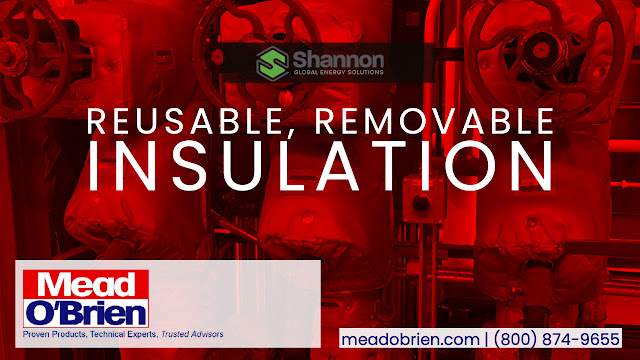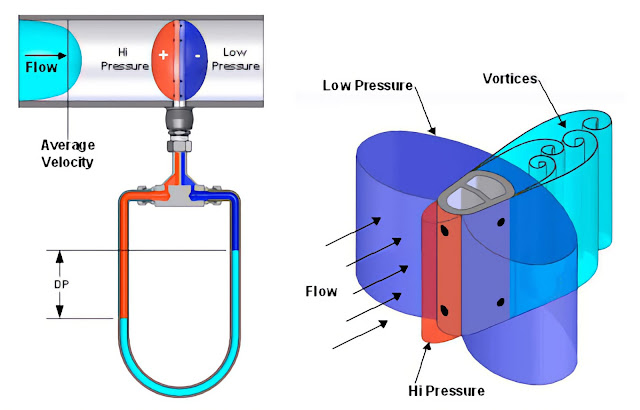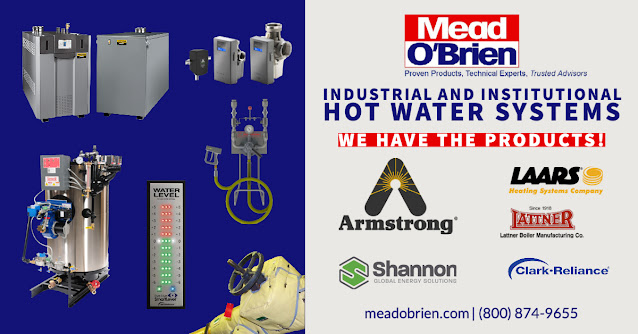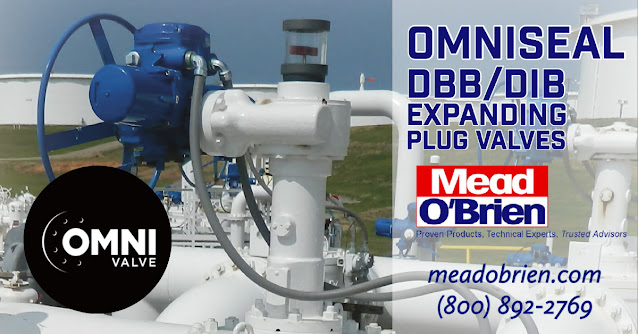- Protection against corrosive media: Diaphragm seals isolate the gauge from corrosive liquids and gases, preventing damage to the indicator and ensuring accurate readings.
- High-temperature resistance: Diaphragm seals use materials that can withstand high temperatures, such as PTFE and Monel, allowing the application of the gauge in high-temperature applications without affecting accuracy.
- Vibration resistance: In high-vibration applications, diaphragm seals reduce the vibration transfer to the gauge, reducing the risk of damage and ensuring accuracy.
- Media compatibility: The diaphragm material can be selected based on compatibility with the process media, ensuring accurate readings and preventing damage to the gauge.
- Longer service life: A diaphragm seal with a pressure gauge in corrosive, high-temperature, and high-vibration applications can extend the service life of the pressure gauge, reducing the need for maintenance and replacements.
Providing problem solving and educational information for topics related to industrial steam, hot water systems, industrial valves, valve automation, HVAC, and process automation. Have a question? Give us a call at (800) 892-2769 | www.meadobrien.com
The Role of Industrial Diaphragm Seals
Benefits of Removable Reusable Insulation
- Acoustic Blankets & Shields
- Acoustic Blankets For Fan And Blower Housings
- Hydrophobic Insulation Blankets
- Safety Fire Blankets
- Safety Rain Shield Protective Enclosures
- Safety Spray Shield
- Safety Throw Blanket
- Thermal Blankets
- Improved energy efficiency: Blanket insulation helps to keep heat inside the facility during the winter and outside during the summer, which can significantly reduce the amount of energy needed to heat or cool the building.
- Lower costs: Reusable blanket insulation is a cost-effective solution for insulation because it can be used multiple times. This reduces the cost of insulation over the life of the building.
- Easy installation: Blanket insulation is simple to install and can be cut to fit any shape or size, making it easy to use in a variety of industrial settings.
- Durable: Reusable blanket insulation is made of heavy-duty materials that can withstand the wear and tear of an industrial environment.
- Safety: Insulation blanket can reduce the hazards of hot surfaces, electrical and fire hazards.
Jamesbury™ Quadra-Powr™ Spring Diaphragm Quarter Turn Actuators for Use in Both Modulating Control and On-Off Service
- Rolling diaphragm for minimum friction
- Low friction bearings – factory lubricated for lifetime
- Field reversible for spring to open or close simply by flipping actuator over
- Safety contained springs prevent hazards of inadvertent ejection during maintenance
- Corrosion resistant – two layer epoxy and polyurethane paint with stainless steel fasteners
- Adjustable stops for both open and closed positions
- Wide input pressure range – up to 7 bar (100 psi)
Industrial Actuators, Valves, and Positioners
Valves regulate fluid flow to provide accurate control and safety in any given process system, and methods of adjusting valve position are always required.
Commonly, valves are operated with handwheels or levers, although some must be regularly opened, closed, or throttled. In certain conditions, it is not always practical to position valves manually; hence actuators are employed instead of hand wheels or levers.
An actuator is a mechanism that moves or regulates a device, such as a valve. Actuators decrease the requirement for people to operate each valve manually. Valves using actuators can remotely control valve position, particularly crucial in applications where valves open and close or modulate fast and precisely.
Pneumatic, hydraulic, and electrical actuators are the three fundamental types.
- Pneumatic actuators employ air pressure to generate motion and are probably the most prevalent type of actuator utilized in process systems.
- Actuators powered by a pressurized fluid, such as hydraulic fluid, are called hydraulic actuators. Typically, hydraulic actuators of the same size produce more torque than pneumatic actuators.
- Electric actuators generate motion using electricity. Actuators usually belong to two broad categories: solenoid or motor-driven actuators.
Actuators position valves in response to controller signals and can be positioned rapidly and precisely to accommodate frequent flow variations. The instrumentation systems that monitor and respond to fluctuations in plant processes include controllers. Controllers receive input from other instrumentation system components, compare that input to a setpoint, and provide a corrective signal to bring the process variable (such as temperature, pressure, level, or flow).
You have a control valve when actuators pair with flow-limiting or flow-regulating valves. Generally speaking, control valves automatically restrict flow to provide accurate flow to a process to maintain product quality and safety.
Control valves can be linear, where the stem moves the valve disk up and down like globe valves, or rotational. Rotary control valves include butterfly valves, which open or close with a 90-degree rotation. The pneumatic diaphragm and electric actuators are the most prevalent on linear and rotational control valves.
Some valves require long stem travel or substantial force to change position. A piston actuator's higher torque is preferable to diaphragm actuators in these situations. Examples of piston actuators are rack and pinion and scotch-yoke designs.
Single-acting piston actuators control the air pressure on one side of a piston, and with higher air pressure, the piston moves within the cylinder and turns the valve. The air on the opposite side of the piston exits the cylinder via an air vent. With decreased air pressure, the spring expands, causing the piston to move in the opposite direction.
If air pressure falls below a predetermined threshold or is lost, the spring will push the piston to the desired position, referred to as the "fail" position (open or closed).
A double-acting piston actuator lacks a spring and has air supply ports on both ends of the cylinder. Increasing air pressure to the supply port moves the valve in one direction. Higher pressure air entering from the opposite supply port pushes the valve in the opposite direction. Filling the cylinder with air and releasing air from the cylinder is regulated by a device known as a positioner.
Typically, the control of pneumatic actuators occurs from air signals from a controller. Some actuators react directly from a controller, for instance, a pneumatic 3-15 PSI controller output. Sometimes, a controller signal alone cannot counteract a valve's friction or the process media's fluid pressure. This situation requires a separate, high pressure air supply and modulating it with a pneumatic or electro-pneumatic positioner. These devices regulate a high pressure air supply to ensure that an actuator has enough torque to position a valve accurately. The positioner responds to a change in the controller's air, voltage, or current signal and proportions the high pressure air to the actuator. Connecting the actuator stem to the positioner is a mechanical linkage. This mechanical connection is also known as a feedback connection. The link moves as the actuator stem moves up, down, or rotationally. The location of the connection informs the positioner when sufficient movement coincides with the controller's air signal. The controller's signal transmits to the positioner instead directly to the actuator, and the positioner regulates the air supply provided to the actuator.
Like other process components, actuators are prone to mechanical issues. Since actuator issues can negatively impact the operation of a process, it is essential to be able to recognize actuator issues when they occur. Frequently, an operator can notice an actuator fault by comparing the valve position indication to the position specified by the controller. For instance, if the position indicator shows the valve closed, but the flow indicator on the controller indicates that flow is still passing through the valve, the valve seat and disc are likely worn, enabling leakage through the valve.
Because there are so many different styles and designs of actuators, positioners, and valves and so many industrial applications, the combination possibility matrix is vast. You must discuss your application with a knowledgeable, experienced valve expert. The success of your project in terms of product quality, system cost, maintenance, and safety depends upon it.
Mead O'Brien
(800) 874-9655
Setting the Foxboro/Schneider Electric IDP10-A Differential Pressure Transmitter for Measuring Flow
The Armstrong VERIS Verabar®
Verabar - Superior Signal Stability and Greater Resistance to Clogging
Verabar - Accuracy You Can Trust And the Data to Back It Up
Verabar - Lower Drag and Extended Turndown
Mead O'Brien Is Your Preferred Source for Institutional and Industrial Hot Water Systems and Equipment
With their manufacturer partners Armstrong International, Lattner Boiler Manufacturing, Shannon Global Energy Solutions, Clark Reliance, and Laars Heating Systems, Mead O'Brien supplies complete equipment packages - including pumps, storage tanks, piping, condensate & steam traps, valves, level instruments, computerized control systems, and high-efficiency insulation. Mead O'Brien's expertise covers heating systems of any capacity.
Mead O'Brien will also assist you in analyzing, designing, and installing boiler efficiency solutions with various fuel options that will reduce energy consumption and greenhouse gas emissions.
Mead O'Brien will professionally and expertly assist you with:
- Commercial projects where the mechanical design takes advantage of a boiler's high turndown and condensing design for optimum hot water efficiency.
- Commercial heating projects where hot water temperatures are to be above 160°F.
- Industrial process applications that require high-pressure hot water.
- Vertical Tubeless Boilers
- Horizontal Firetube Boilers
- Low-NOx Boilers
- Electric Boilers
- Steam Trap Surveys
- Thermal Assessments
- Hot Water System Surveys
Contact Mead O'Brien today to learn more. Call (800) 892-2769 or visit https://meadobrien.com.
Inflatable Seat Butterfly Valves - Posi-flate
The Posi-flate Inflatable Seat Butterfly Valve uses air pressure to inflate the seat against the disc and create a bubble-tight seal, resulting in minimal friction as the disc opens and closes. The Posi-flate inflatable seat automatically compensates for wear, providing longer valve life.
The resilient seated butterfly valve forces the disc into the static seat, causing impingement between the disc and seat, resulting in excessive damage, premature wear, and valve leakage.
The Posi-flate inflatable seated butterfly valve offers less friction, low torque, less wear, and longer valve life!
Unlike other valves that seal with friction, Posi-flate's unique butterfly valve uses an inflatable seat to seal with air pressure. Thus it requires less torque and a smaller actuator, resulting in lower overall valve cost. Plus, the seat automatically compensates for wear, providing longer valve life.
How Posi-flate Butterfly Valves Work
Closed, unsealed
As the valve rotates into the closed position, the disc makes only casual contact with the seat, reducing friction, wear, and torque requirements.
Closed, sealed
After the valve is closed, the seat inflates against the disc providing more sealing surface and an even pressure distribution against the disc.
Open, unsealed
Before the valve opens, the seat deflates. The disc is then free to rotate to the open position.
Posi-flate inflatable seated butterfly valve applications include:
- Material Control and Cut-Off Valve Applications
- Double Dump Valve Assembly Applications
- Dryer Valve Applications
- Outlet Valve Applications
- Pneumatic Conveying Valve Applications
- Vacuum Valve Applications
For more information about Posi-flate inflatable disc butterfly valves, contact Mead O'Brien at (800) 892-2769 or visit http://www.meadobrien.com.
Benchmarking Energy Consumption of Equipment and Facilities
Note: The following post discusses energy consumption and benchmarking in general. As you'll see, the most significant component of plant energy consumption is typically process heating/steam consumption. Mead O'Brien, along with products and technologies from Armstrong International, Shannon Global Energy Solutions and Everactive, has the people, equipment, and experience to assist you in developing a strategy to significantly improve your plant steam and hot water systems conservation efforts. Contact Mead O'Brien for more information.
While each manufacturing facility and production process is unique, every industry uses similar equipment. Most facilities' major energy consumers concentrate energy use on a few basic systems: lighting, process heating, steam generation, compressed air, pumping, and fans. Making a list of Significant Energy Users (SEUs) can assist in focusing efforts on projects that will result in the most significant savings.
To create a list of SEUs, group equipment by location, type, or process, and record information such as estimated operating hours, rated power, and loading. The diagram below depicts the various systems and equipment that consume energy in a typical plant and the differences in potential energy savings between facility systems.
The 80/20 rule applies here. Eighty percent of energy consumption is accounted for by 20 percent of the equipment or processes. Only a few energy systems typically consume most of the energy at a site. Consider concentrating your efforts on these systems.
Comparing facilities, processes, or equipment over time is the baseline. Benchmarking: Comparing the energy performance of facilities, techniques, or equipment over time to similar internal or external facilities.
Benchmarking the performance of your SEUs is a great place to start on your energy-saving journey. If you work in a multi-facility organization, you can use benchmarking to compare facilities and combine the results to identify best practices. Even if you only have one facility, benchmarking against similar equipment within your facility allows you to identify areas for improvement and best practices of your own.
Benchmarking can include practices such as understanding, comparing, and optimizing maintenance measures and equipment energy use (such as boiler blowdown or compressed air leaks).
Benchmarking your energy data allows manufacturers to compare their equipment, process, or facility to others and identify potential energy savings opportunities. Benchmarking understands how you currently operate (for example, how much energy your plant or a single SEU uses) and compares that to similar operations.
Benchmarking internally (comparing similar steam boilers in the same facility), company-wide (comparing air compressors in different facilities), industry-wide (information from surveys, trade groups, etc.), or all three. Benchmarking can be intimidating for many small manufacturers because, unlike your larger industry peers, you don't have a large pool of plants, manufacturing lines, and heavy equipment for a fair comparison. However, even the smallest manufacturers must compare their major energy users to best practices.
Energy savings occur in systems such as compressed air, steam generation/distribution, or process heating. Determine the types of energy resources used by each piece of machinery or process. A paint booth, for example, will use compressed air to spray the paint, exhaust fans, and process heating to cure the painted product. This activity will aid in the identification of individual energy-consuming systems and their supporting equipment.
Small or medium-sized manufacturers may lack a large energy team, a large budget, or the resources to conduct large-scale energy audits or significant equipment overhauls. Turning to outside experts can be extremely helpful provide proven expertise all for reasonable costs.
Call a Mead O'Brien steam/hot water efficiency expert to help you establish your energy conservation plan.
(800) 874-9655
A Commitment to Sustainability Starts With A Strong Value System and A Principled Approach to Doing Business
Mead O'Brien Mission
Carbon footprint reduction, increased throughput, and safety is our goal.
- Benchmarking Energy Consumption
- Analytical Measurements for Steam or Hot Water Generation
- Use of Instrumentation to Increase Throughput
- Use of Instrumentation to Increase Safety
- Control Environmental Leakage Rates Through Valves
- Optimize Valve Selection & Automation for Reliability
- Applications of Appropriate Safety Approvals Such as FM, API, NFPA, ANSI
- Valve Assembly and Testing Documentation
OmniSeal Expanding Plug Valves from Mead O'Brien
OmniSeal expanding plug valves are intended for applications requiring positive shut-off, verifiable zero leakage, double block and bleed (DB&B), and/or double isolation and bleed (DIB).
Mead O'Brien, Armstrong International, and Everactive: Partners in Decarbonization, Reducing Energy Waste and Sustainability
Mead O'Brien provides the experience and expertise, along with Armstrong's Sage™ IIoT platform and Everactive's battery-less technology, for a completely new energy monitoring and management approach for the process industries.
Consistent with the global move toward sustainability and energy efficiency, Mead O'Brien is proud to join Armstrong International and Everactive. This partnership allows us to work with our customers steam, hot water, and process heating applications in a completely new way. By combining our abilities and technologies jointly, we improve your production process and performance, reduce environmental emissions, increase safety, and help you reach your net-zero carbon goal.
Mead O'Brien, Armstrong International, and Everactive provide the technology and resources to assist you in developing a decarbonization road map customized to your facility and industry. Call us today for more information. 800-874-9655.
Mead O'Brien
https://meadobrien.com/netzerocarbon.
















